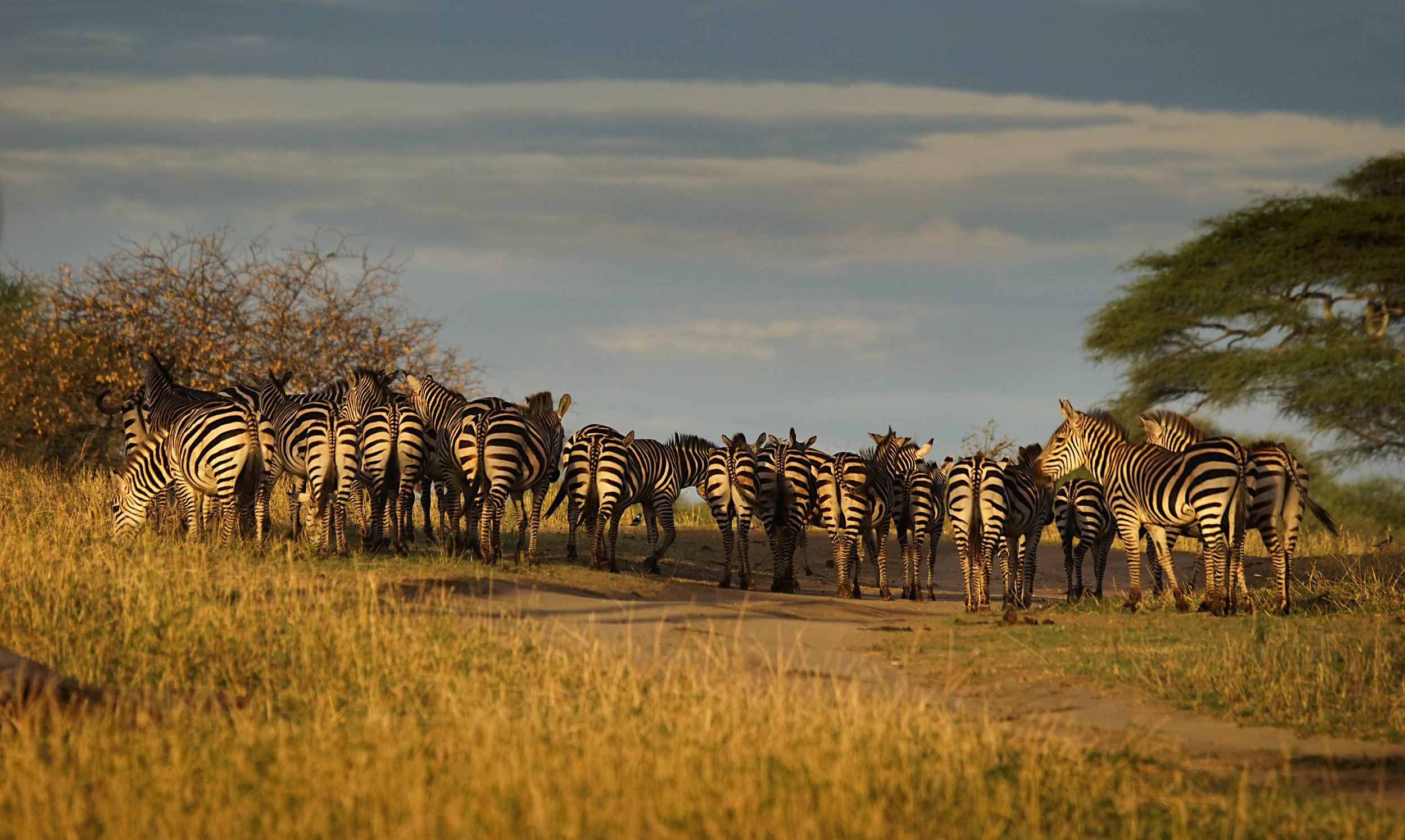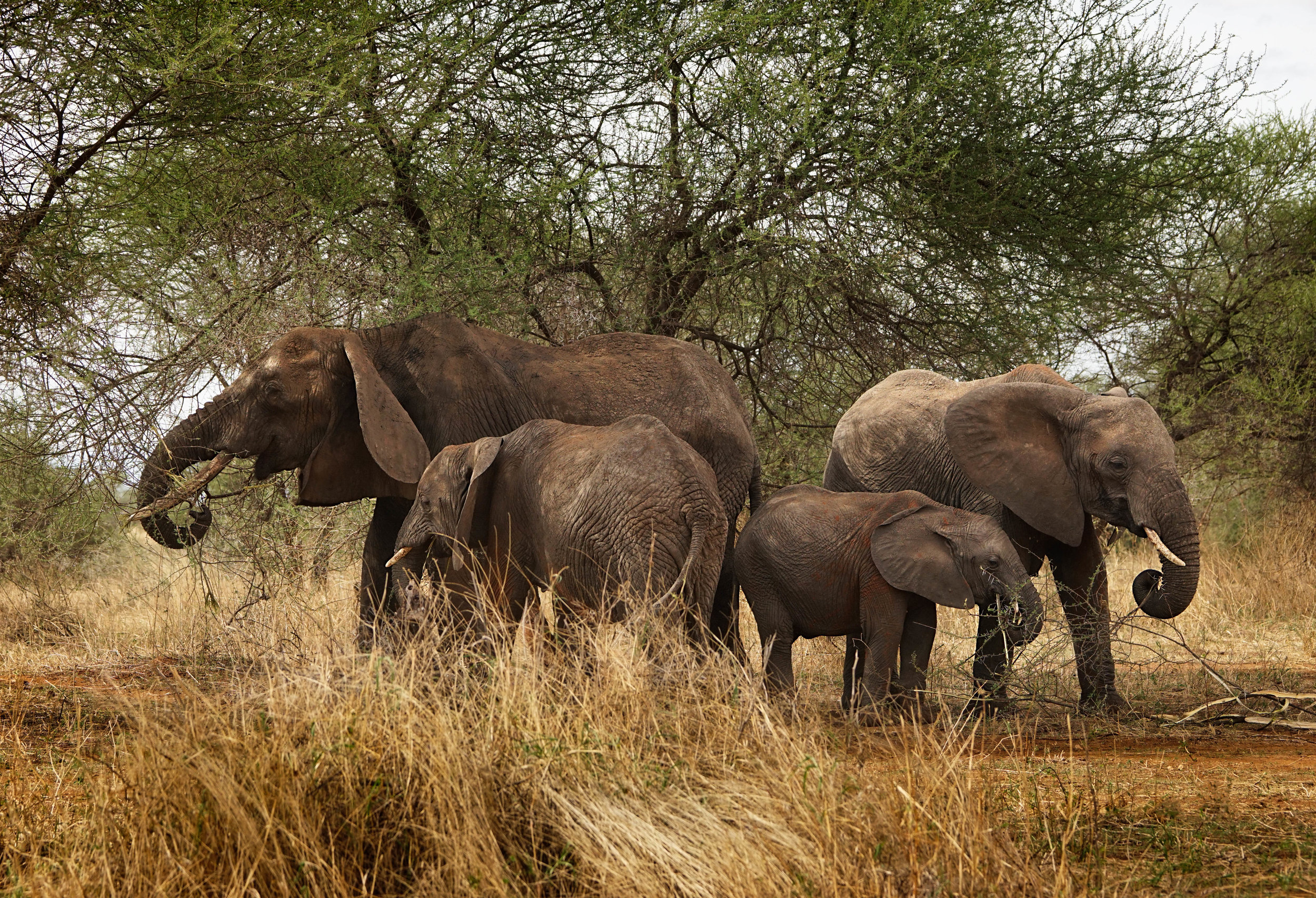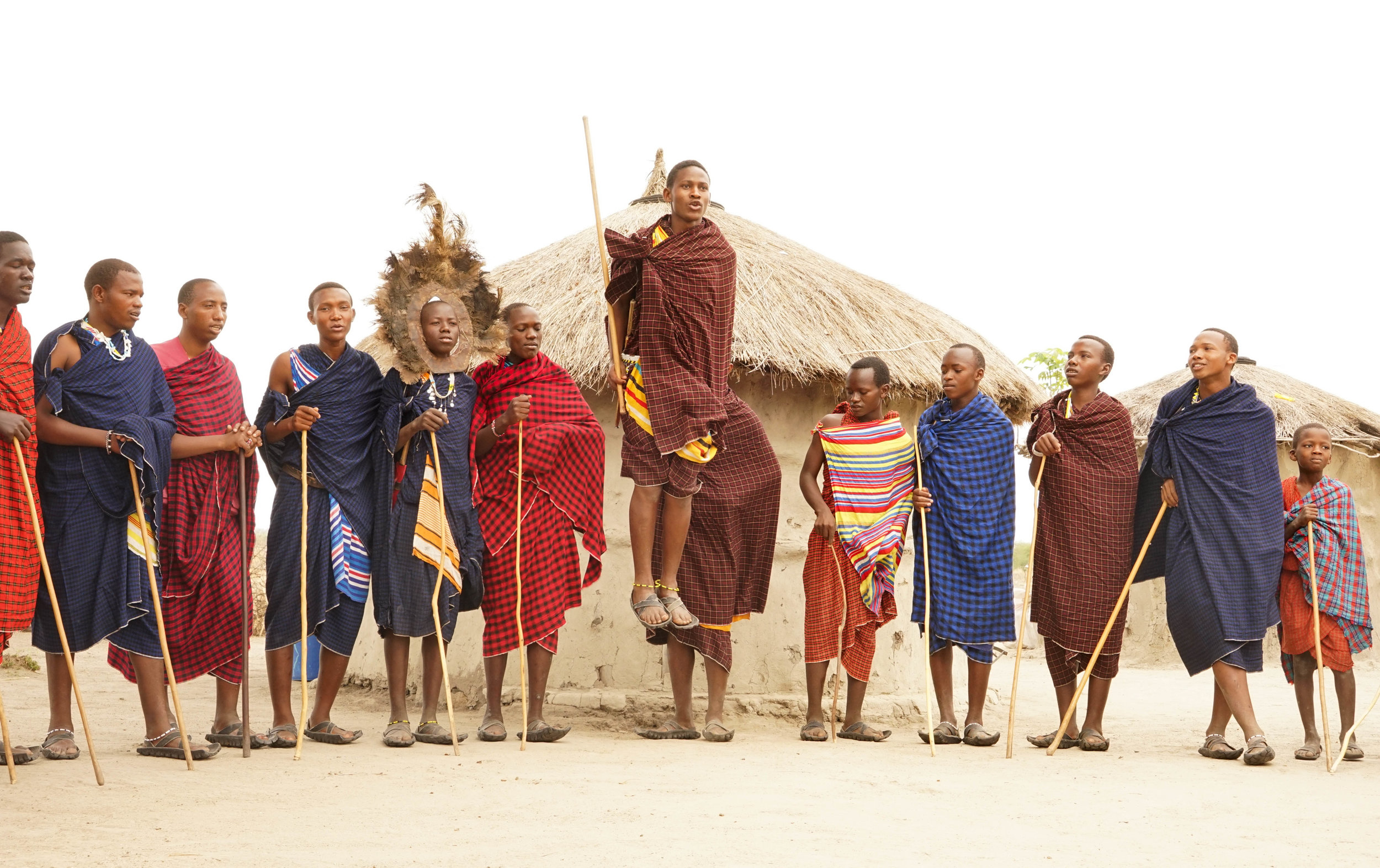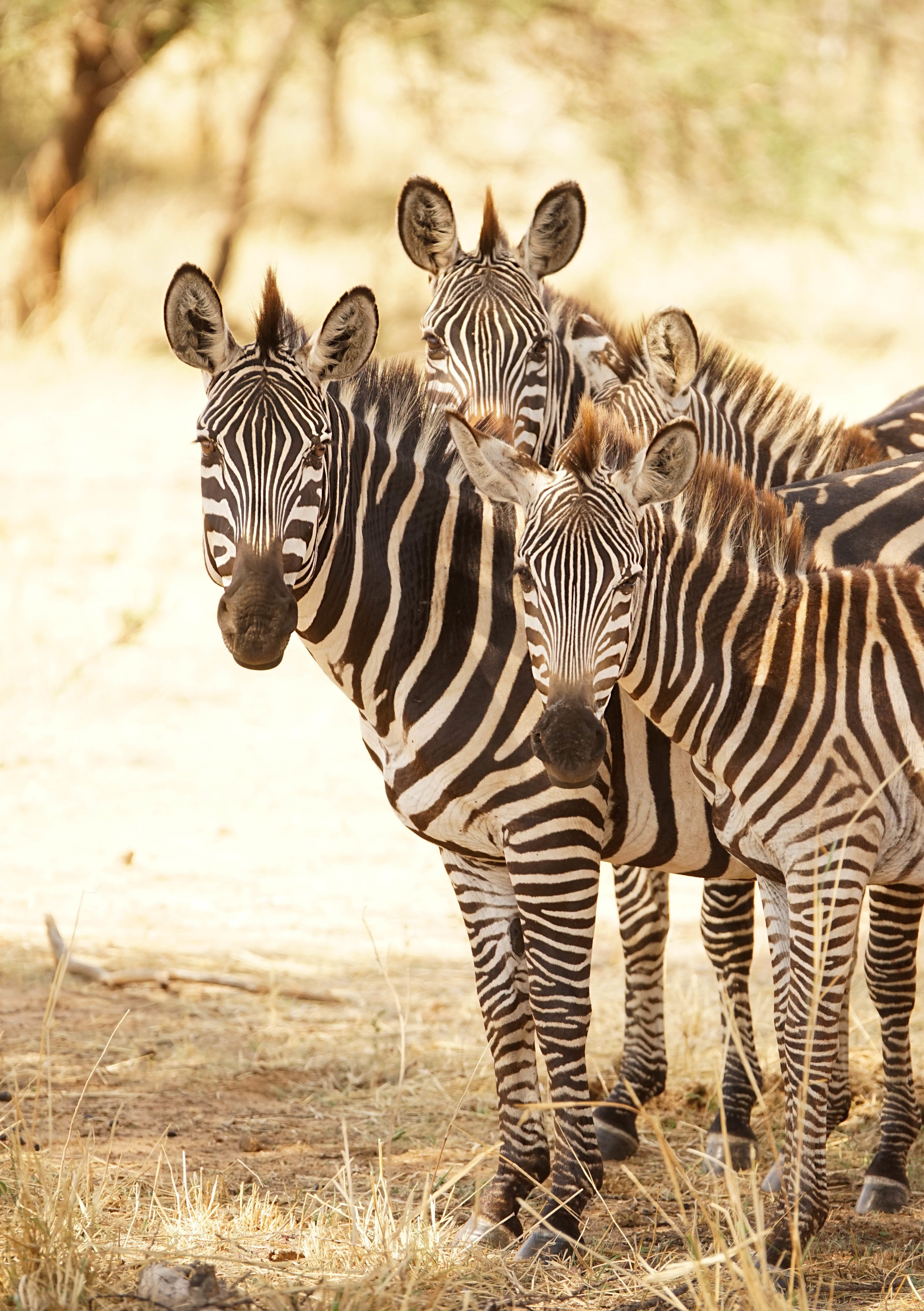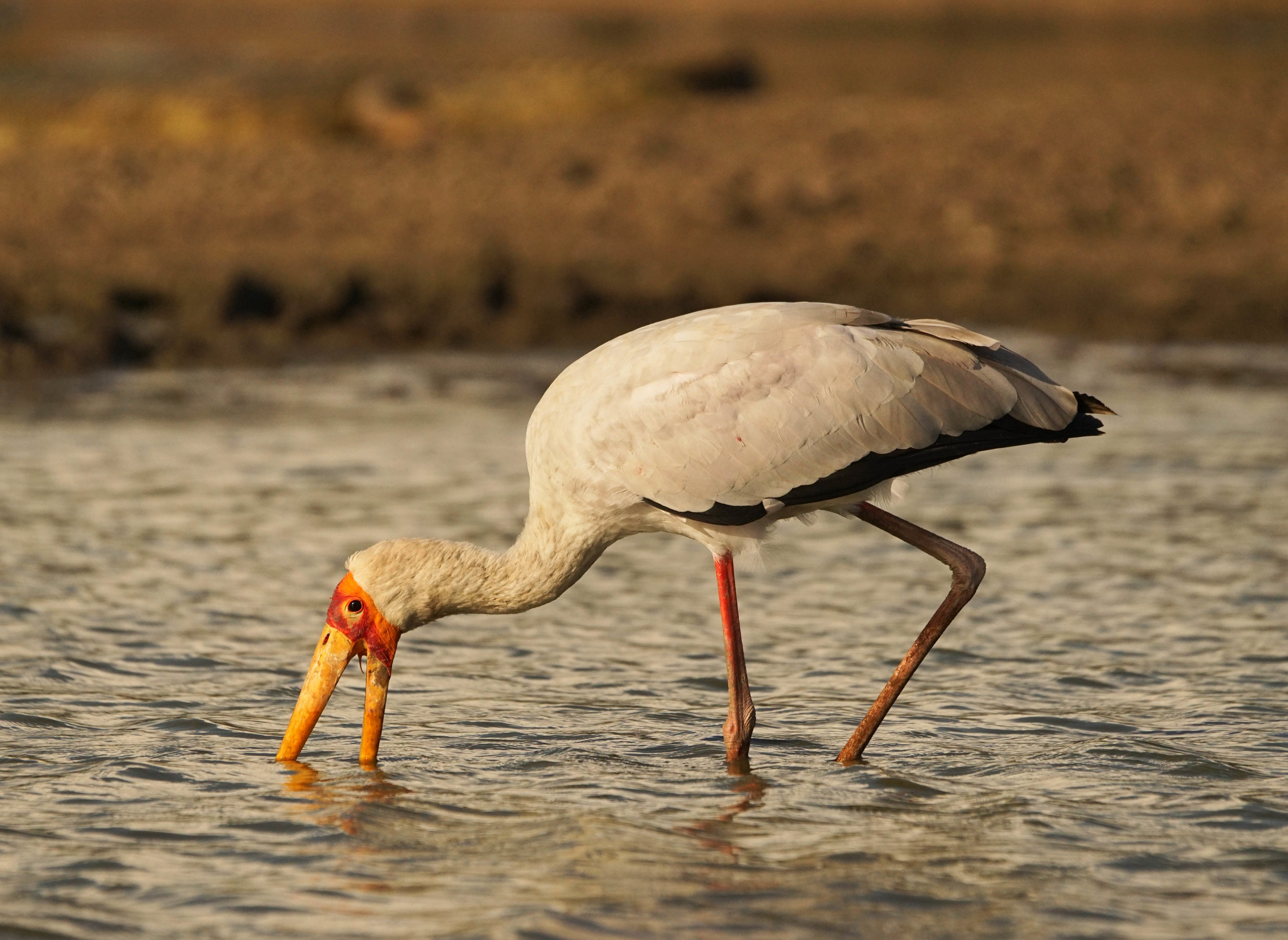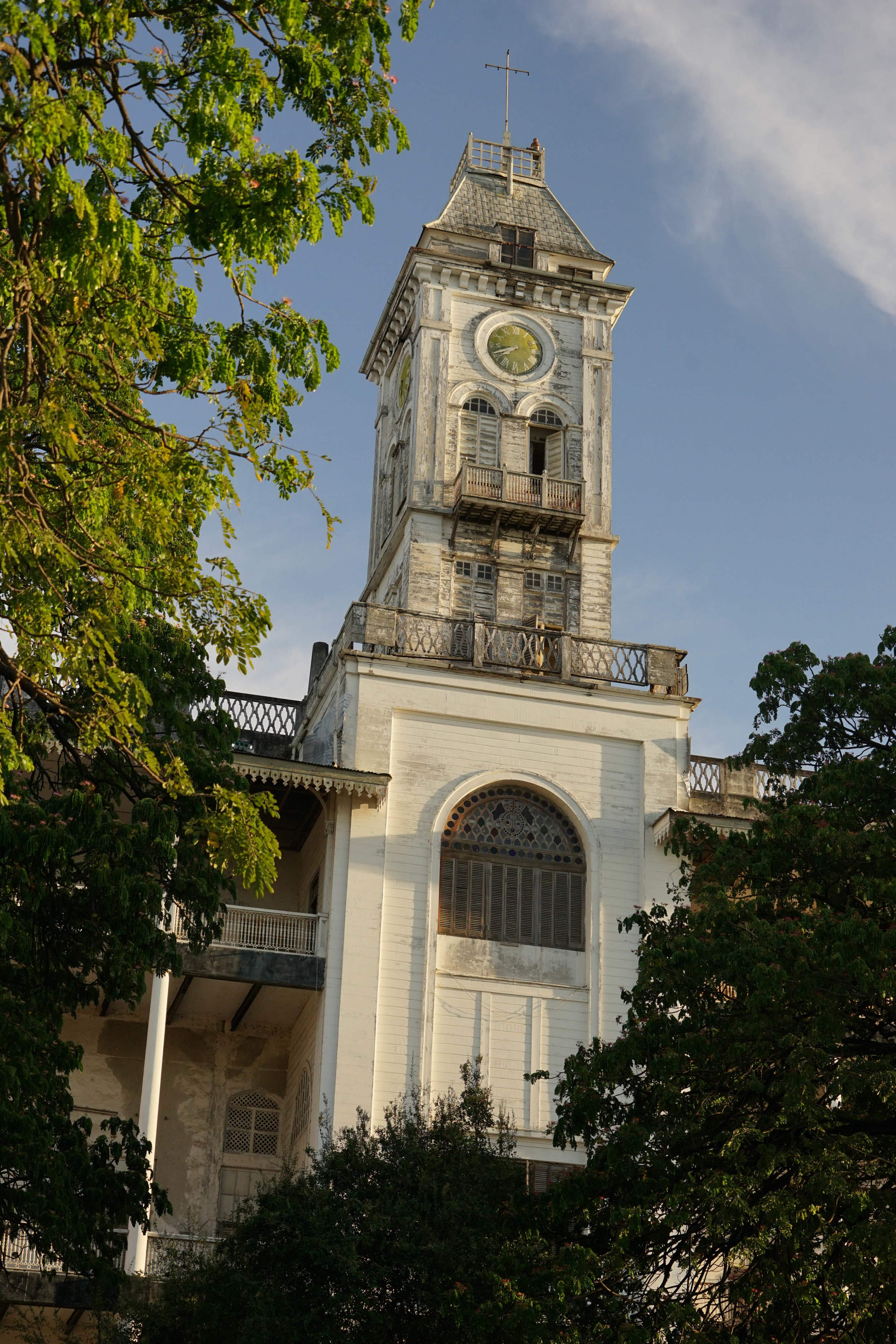wonders of tanzania
November 4-20, 2023
Tanzania arguably is the greatest wildlife extravaganza on our planet – offering an abundance of birds and mammals in the most dramatic and amazingly beautiful setting! Long ago Tanzania realized the importance of its natural resources and today more than 30% of the country is protected land in the form of national parks and reserves.
Our expedition will be an adventure of a lifetime. Get ready to wander among the giant baobab trees of Tarangire National Park, explore the compact Lake Manyara National Park, and visit two of the world’s most famous wildlife destinations—the Ngorongoro Crater and the vast Serengeti. Next head south to the lesser known Nyerere National Park; the largest reserve on the continent, where exploration options include vehicles, boats and walking. Finally we finish on the island of Zanzibar – rich in history and culture, surrounded by the beautiful blue waters of the Indian Ocean.
As with all Galápagos Travel expeditions we don’t want to rush the experience; spend an incredible 18-days/17-nights in Tanzania getting to know this remarkable country. Our days will be full, with early-morning and late-afternoon excursions to catch the peak animal activity as well as best lighting for photography. We will travel in traditional Land Cruiser type safari vehicles, with everyone having a window and an open roof above them guaranteeing the best views and photo opportunities. Our accommodations will be a mix of charming hotels and traditional tented safari camps.
Group size is capped at 16 participants so you may experience the wonders of these parks and preserves without the crowds. The photo opportunities will be unrivaled!
elephant family group, Tarangire National Park
TOUR LENGTH:
17 days in Tanzania, plus travel days.
GROUP SIZE:
Maximum group size is 16 participants. An expert Tanzanian Guide will be with us throughout our stay, plus specialty guides at individual locations. Minimum group size is 10 participants.
ITINEARY OVERVIEW:
Day 1: International arrival into Arusha
Day 2: Full day exploring around Arusha
Day 3: Tarangire National Park
Day 4: Tarangire National Park
Day 5: Lake Manyara National Park
Day 6: Karatu highlands
Day 7: Ngorongoro Crater / Olduvai Gorge / Southern Serengeti
Day 8: Southern Serengeti
Day 9: Central Serengeti
Day 10: Central Serengeti
Day 11: Central Serengeti / Nyerere National Park
Day 12: Nyerere National Park
Day 13: Nyerere National Park
Day 14: Nyerere/ Stone Town, Zanzibar
Day 15: Stone Town, Zanzibar
Day 16: Changuu Island & Nakupenda Sandbank, Stone Town, Zanzibar
Day 17: Jozani Chweka Bay National Park, Zanzibar / international departure
DAY BY DAY ITINERARY:
Day 1 (November 4) - International Arrival
International arrival at Kilimanjaro Airport (JRO) Tanzania – most flights will arrive at night. Upon arrival at Kilimanjaro International Airport (JRO), you will be met outside customs and transferred to Arusha (60 kilometers / 45 minutes) for an overnight stay at Moivaro Coffee Plantation Lodge & Estate.
Day 2 - Day in Arusha
A relatively easy day today, allowing us to adjust to the time change and long flights. Rather than exploring the city we will explore the rural countryside in the region, possibly including a local reserve and coffee plantation. We should also have an opportunity to check out some of the local handicrafts, including woodcarvings and fabrics. A good night’s rest will prepare us for tomorrow’s adventures, as we set out in our safari vehicles! Overnight Arusha: Moivaro Coffee Plantation Lodge & Estate.
Day 3 - Tarangire National Park
After an early breakfast and safari briefing we depart with picnic lunches for game drives in Tarangire National Park, which is known for up to 300 elephants. It‘s the greatest concentration of wildlife outside the Serengeti ecosystem and the one place in Tanzania where dry-country antelope such as the stately Fringe-eared Oryx and peculiar Long-necked Gerenuk are regularly observed. The swamps, tinged green year round, are the focus for 500 bird species; the most breeding species in one habitat anywhere in the world. Overnight Tarangire: Tarangire Safari Lodge.
Maasai village outside Tarangire National Park
Day 4 - Tarangire National Park
Another full day in Tarangire to explore this extremely bird-rich habitat. Avian highlights might include White-headed, Rüppell’s, and African White-backed Vultures, Maasai Ostrich, Red-necked Spurfowl, Bare-faced Go-away Bird, Black-faced Sandgrouse, Lilac-breasted Roller, Nubian Woodpecker, White-browed Coucal, African Hoopoe, Magpie Shrike, Northern White-crowned Shrike, and the endemic Yellow-collared Lovebird. The rare African Hunting Dog is occasionally seen here. Overnight Tarangire: Tarangire Safari Lodge.
Day 5- Lake Manyara National Park
Just outside Tarangire National Park we will visit a Maasai village for a cultural interaction. The Maasai have likely inhabited this part of Tanzania and Kenya since the mid 15th century; today many of Tanzania’s famous parks were once part of their lands. Nomadic pastoralists, they retain many of their traditions, including their colorful dress and ceremonies. There will likely be an opportunity to purchase beaded crafts in the village.
Our next stop will be Lake Manyara National Park. Small, beautiful and richly diverse, the park is easily explored. Lake Manyara is surrounded by tall forests - a very different habitat from what we have experienced previously - supporting abundant bird life. The park is also known for its concentration of baboons, plus smaller groups blue monkeys. Keeping an eye on the trees one might also see the occasional tree-lounging lion. The lake harbors pods of hippos wallowing alongside flocks of pink flamingos, plus elegant pelicans and other aquatic life.
From Lake Manyara it is a fairly short drive to the Karatu highlands. Overnight: Ngorongoro Farm House Lodge.
Day 6 - Karatu highlands
Today is a cultural day in the Karatu highlands region, between Lake Manyara and the Ngorongoro Crater. Early morning at the lodge is often a birders delight, with many species of birds working the gardens and forest edge. The colorful crossroads town of Karatu is an eclectic mix of safari vehicles, local buses, brightly colored tuk-tuks and ox carts. We anticipate visiting FAME Africa, where an American doctor runs a medical project. Later we visit the town marketplace, learn about the pastoral Iraqw tribe inhabiting the area, and visit the local brick making “factory.” Overnight: Ngorongoro Farm House Lodge.
Day 7 - Ngorongoro Crater, Olduvai Gorge & Southern Serengeti National Park
We rise very early this morning so we may descend the steep walls of the Ngorongoro Crater at sunrise (the park gates open at 6am and our goal is to be there at opening). The Ngorongoro Crater is a World Heritage Site – the world’s largest intact volcanic caldera – and is commonly referred to as the 8th wonder of the world. The 2,000 foot high walls of the approximately 10 mile wide crater form a natural amphitheater for the densest population of large animals anywhere. The crater supports upwards of 25,000 large mammals. Grazers dominate: zebra, wildebeest, gazelle, buffalo, eland and hartebeest, plus the engaging wart hog. There is no shortage of predators as well. It is a microcosm of the vast Serengeti National Park and in a single morning it is possible to see a wonderful array of East Africa wildlife including the rare black rhino. The Crater is truly awe-inspiring and will surely be one of the highlights of our safari.
Following a picnic lunch in Ngornogoro we ascend the crater walls en route to the Olduvai Gorge, where Louis and Mary Leakey unearthed remarkable fossils in the 1950's that changed our understanding of human evolution. Homo habilis occupied Olduvai Gorge, here at the edge of the Rift Valley, approximately 1.9 million years ago.
We’ll wrap up our day’s travels with game viewing in the Serengeti en-route to our camp! As with all of our tented camps take the time to savor the night sky, searching for the Southern Cross and other constellations not visible from the northern hemisphere. Overnight Southern Serengeti: Lake Masek Tented Camp.
Grant’s gazelle
Day 8 - Southern Serengeti National Park
The Serengeti takes its name from the Maasai “siringet,” meaning “endless plains.” The Serengeti contains as many as 3 million large animals, most taking part in seasonal migrations unparalleled in nature. One highlight of this part of the Serengeti is the opportunity to drive off-road, making it a great benefit for birding and photography enthusiasts. The great plain of the Serengeti will be alive with grazing herds of wildebeests & zebras along with the Big Five and many cats. During the evening at your lodge you be thrilled to hear the grunts of the hippos in the distances. Overnight Lake Masek Tented Camp.
Day 9 - Central Serengeti National Park
After breakfast we depart for the Central Serengeti, including watching for wildlife along the Seronera River. This vast valley teems with wildlife, with plentiful vegetation supporting herbivores throughout the year. Wildebeest, zebras, elephants, giraffes, gazelles and many other species can be spotted here on any given day. The large amount of prey also draws the highest population of predators. Overnight Serengeti: Kati Kati Tented Camp.
Carmine bee-eater
Secretary Bird
Red-billed Hornbill
Yellow-billed Stork
Day 10 - Central Serengeti National Park
Today is another full day of game viewing in the region… Once again our day starts very early with a sunrise game drive, or an optional hot air balloon journey over the plains. Overnight Serengeti: Kati Kati Tented Camp.
Black-backed Jackals
Day 11 - Serengeti - Dar es Salaam - Nyerere National Park
Today we fly from the Serengeti to Nyerere National Park (formerly the Selous Game Reserve); the largest game reserve on the continent (and another UNESCO World Heritage Site)! Located in south-western Tanzania, Selous Game Reserve was founded by the German colonial administration in 1905. It was later expanded to include traditional elephant migration routes and accommodate the vast herds of buffalo that roam this remote, untouched corner of Africa. Today it is three times the size of the Serengeti, or twice the size of Belgium! Owing to the immense size of the sanctuary it is relatively undisturbed by human impact. Most of Africa’s mammal species, from the largest to the smallest to the rarest, thrive here. Vegetation zones/habitats include Miombo woodlands, rocky acacia-clad hills, open grasslands, riverine forest and swamps. An astonishing 2,100 plant species have been recorded within the different ecosystems. More than 440 bird species are found here! Concentrations of game include elephant, black rhinoceros, giraffe, hippopotamus, cheetah, lion, leopard, wild dog, crocodile, and more. One of the remarkable features here is the diversity of explorations possible; classic jeep safari, small boat excursions, or walking safaris.
Upon landing we will have our first game drive en route to our camp. This afternoon we will continue our explorations of the reserve, possibly by safari vehicle or boat... Daily the lodge offers a “menu” of guided activities with their local guides. Options might include an early morning “bush breakfast” - a game drive with a picnic breakfast in the field, or a more leisurely morning game drive or boat outing following breakfast at the lodge, or a full day in the field with a picnic lunch… One day there will also be an optional nature hike focused more on the small details; animal tracks, scat, insects, vegetation… Overnight at Lake Manze Tented Lodge.
Day 12 - Nyerere National Park
Today is a full day to explore the Nyerere as you wish, by boat or game drive. One sure thing is it will be a full day of activities and adventures! Overnight at Lake Manze Tented Lodge.
Day 13 - Nyerere National Park
Today is another opportunity to explore Nyerere. Depending on water levels we might take an early boat ride down Stiegler's Gorge. From a mile wide, the river narrows, flanked by steep forested walls and dotted with sandbanks. On one of these we might moor the boat and hop out for a picnic breakfast. As the day warms up, we will drift gently back down the river, watching to see what's coming down to drink. Overnight at Lake Manze Tented Lodge.
Youngsters are always cute…
Day 14 - Selous/ Stone Town, Zanzibar
After breakfast we take a short drive to the airstrip for our flight to Zanzibar. Upon arrival in Zanzibar we will be met by a local guide and transferred to our hotel in the heart of Stone Town (another UNESCO recognized site). Zanzibar retains the imprint of its deep history of passing sultans, explorers, slave traders and merchants. Many a voyage started, or ended, here. Arab influenced architecture and winding streets are home to churches, bazaars, markets and palaces. Beyond the city fragrant spice plantations and palm-fringed beaches beckon the visitor. This evening we’ll experience Stone Town from the water with a traditional dhow sunset cruise along the coastline. Overnight Stone Town: Maru Maru Hotel Zanzibar.
Day 15- Stone Town, Zanzibar
This morning we will have a walking tour of Stone Town, including the historic Slave Market, Spice Market, and more. The city is home to a variety of charming shops and handicrafts, including a popular women's collective. This afternoon we will visit an inland spice farm to learn about the many local spices and and their uses. Overnight Stone Town: Maru Maru Hotel Zanzibar.
Stone Town scenes
Day 16 - Zanzibar
Today we head 30 minutes offshore, first to Changuu Island (also known as Prison Island). No longer a prison, today the island is home to a large number of Giant Tortoises, native to Aldabra Island (Seychelles). The only remaining native populations of Giant Tortoises in the world are those from the Galapagos Islands and Aldabra. After exploring Changuu Island our next destination is Nakupenda Sandbank. Here several sandbars rise from the turquoise waters of the Indian Ocean. We will have time to swim the calm waters or snorkel the fringing reef, home to myriad fish, all while a wonderfully fresh seafood barbecue lunch is prepared for us. Afternoon return to Stone Town. Overnight Stone Town: Maru Maru Hotel Zanzibar.
Day 17 (November 20) - Zanzibar – international departure
This morning we drive to the Jozani Chweka Bay National Park. The highlight of the park is the red colobus monkeys found there. Other attractions include Sykes’ monkey, plus over 50 species of butterfly and numerous bird species.
This afternoon we return to Stonetown for a late afternoon flight to Dar es Salaam, arriving in plenty of time to connect with the international flights home from here (the KLM flight departs shortly before midnight).
This itinerary represents our intended routing. The final routing might be modified based on recent wildlife activity, weather, and accommodation or transportation logistics.
EXPEDITION DETAILS:
November 4-20, 2023
EXPEDITION COSTS:
2023: $15,900 per person, double occupancy / $17,500 single but willing to share / $18,500 guaranteed single.
For single travelers we are happy to try and schedule a roommate for you. If we fail to find a roommate you will be invoiced at the "willing to share" rate. Alternately we have a very limited number of guaranteed singles available if you prefer.
INCLUDED IN EXPEDITION COST:
All lodging in Tanzania; All meals with group in Tanzania, from breakfast on Day 2 through lunch on Day 17; In-country flights (Serengeti/Nyerere, Nyerere/Zanzibar, and Zanzibar/Dar es Salaam); International Airport transfers to coordinate with the Delta/KLM flights from Amsterdam on standard travel dates, including meet & greet services; National park & reserve entrance fees, including special game drive permits with exclusive access; Olduvai Gorge Museum entrance fees; Maasai Village visiting and photography fees; Private use of specially outfitted 4WD stretched Land Rover or Land Cruisers for our group; Leadership by our expert Tanzanian Tour Leader, plus knowledgeable Tanzanian driver-guides; Unlimited bottled drinking water in your vehicle; Emergency Flying Doctor in-country insurance; all gratuities to porters, guides and lodge/restaurant staff; Pre-departure materials & map.
NOT INCLUDED IN EXPEDITION COST:
International airfare to and from Tanzania (into Kilimanjaro International Airport (JRO) and out of Dar es Salaam (DAR); international arrival/departure transfers except as noted; passport or visa fees; mandatory travel insurance (evacuation insurance required); travel inoculations or medications; Items of a personal nature, such as laundry services, telephone or WiFi charges, or room service; Excess baggage charges; Alcoholic beverages or sodas.
BOOKING TERMS:
A 25% deposit is required to confirm space on this expedition. A second 25% deposit will be due 6 months prior to departure. The remaining balance will be due 90 days before departure. Due to the limited space at the lodges, pre-payments in Tanzania, and the general expense of operating in these remote destinations all deposits and payments are non-refundable. For this reason we strongly recommend purchasing Trip Cancellation Insurance: a comprehensive International Travel Protection Insurance package is available through GALAPAGOS TRAVEL to all U.S. residents – you will receive a policy application along with your deposit receipt.
Ostrich on the Serengeti
DOCUMENTATION:
You will need a current passport to travel to Tanzania, valid for at least 6 months after the trip. In addition Tanzania requires a tourist visa from most countries, including the U.S. (although the process is remarkably fast). If arriving from a yellow-fever-infected country a vaccination certificate is required.
Covid test requirements are ever-changing. Currently there are no test requirements to enter or depart Tanzania.
OPTIONAL:
Sunrise flight over the central Serengeti
For many visitors to the Serengeti the quintessential image they might have in mind is a hot air balloon drifting over the wildlife. You can do that! In place of one of our sunrise safari drives you can take to the air for a 90 minute sunrise "flight"! Following the flight enjoy a lavish champagne bush breakfast on the plains. The balloons carry 16 riders in their basket and this outing must be reserved in advance. Cost is $630 per person. Several participants on our past expeditions have commented that this was an expedition highlight!
Wildebeest & Zebras are often found together
ACCOMMODATIONS:
Accommodations have been selected to give the best access to the places we really want to be for the fullest wildlife experience. They are a mix of traditional hotels, permanent and mobile tented camps. Accommodations are in doubles, with a very limited number of singles available at a surcharge.
On the outskirts of Arusha we find the Moivaro Coffee Plantation Lodge & Estate (2 nights). Tropical gardens surround the brick cottages with thatch roofs and private verandas, plus a welcoming pool. http://moivaro.com/lodges/tanzania/moivaro-lodge/
The Tarangire Safari Lodge (2 nights) is situated on a bluff overlooking the vast savannah and Tanangire River below. Accommodations are offered in quintessential safari tents (with en-suite solar showers) or Maasai boma-style bungalows. Other features include a spectacular view terrace, boutique, open-air dining pavilion, a pool, and WiFi. Don’t be surprised if you hear lions in the night, or impalas or elephants walk past your tent at daybreak! www.tarangiresafarilodge.com
Near Ngorongoro Crater we will stay at the Ngorongoro Farm House (2 nights). This coffee plantation offers modern accommodations, large verandas with views of the Oldeani Volcano, gracious gardens, a pool, WiFi, and laundry. Huge organic gardens supply their kitchens as well as attracting a rich assortment of bird life. http://twctanzania.com/en/accommodation/ngorongoro-farm-house/
The Lake Masek Tented Lodge (2 nights) is a premium tented camp in the southern Serengeti. The remote setting of the lovely tented camp brings us as close to nature as possible! 20 deluxe tents feature private elevated terraces, screen porches, and luxury accommodations. Adjacent to the open-air dinning room/lounge is an infinity pool overlooking the lake. http://twctanzania.com/en/accommodation/lake-masek-tented-lodge/
The Serengeti Kati Kati Tented Camp (2 nights) offers 16 traditional tents, each with private showers, flush toilets, and lighting by solar lights. This is our most rustic camp, set amid a scrub forest overlooking the plains. Sundowners are served around a nightly campfire, with dinner in a nearby open-air tent. www.tanganyikawildernesscamps.com/camps/serengetimediumcamp/
The Lake Manze Tented Lodge (3 nights) is located on the shores of Lake Manze. Twelve lovely walk-in tents, each with twin or double beds, flush toilet, outdoor shower and private shaded veranda are perfectly situated to enjoy the setting and passing wildlife. The central “lodge” is simply a large thatched roof spreading above a sand floor, with armchairs and sofas for lounging with a drink to watch the animals come and go. Candle-lit dinners are under the vast African sky. http://www.ed.co.tz/property/lake-manze/
The Maru Maru Hotel Zanzibar (2 nights) offers 5-star quality, blending classic Zanzibar style and modern luxuries, just steps from the city’s historical wonders. A rooftop pool deck and restaurant offers 360 degree views over the city. www.marumaruzanzibar.com
Central Serengeti: Kati Kati Tented Camp
Selous: Lake Manze Tented Lodge
Moivaro Coffee Plantation
Southern Serengeti: Lake Masek Tented Lodge
Tarangire Safari Lodge
Ngorngoro Farm House
Most accommodations offer same-day laundry service if clothes are dropped off in the morning. Most also offer WiFi although the signal might be slow/weak at times.
Please note that all accommodations are subject to final confirmation based on availability – comparable hotels will be substituted as required.
LEADERSHIP
This exclusive safari has been designed by, and will be led by, Tanzania native Deus Haraja. Now a resident of the U.S., Deus has been guiding in his homeland for more than 15 years. Today he returns just 4 to 6 times each year, leading specialized groups with a focus on wildlife, photography and anthropology. Both individual travelers and groups who want the best experience possible seek Deus out. Recent clients have included PBS, the University of Pennsylvania, and the Michael J. Fox Foundation.
In addition game drives will be led by expert local driver/guides with a passion for the wildlife and sharing it with us.
AIR ARRANGEMENTS
No carriers fly directly between North America and Tanzania. We find the easiest connection is with KLM (a codeshare with Delta), via Amsterdam. Included airport transfers in Tanzania will coordinate with this flight (transfer connections with all other flights can be arranged at an extra cost).
The internal flights – Serengeti/Nyerere, Nyerere/Zanzibar, and Zanzibar/ Dar es Salaam – are included in the tour cost. On these internal flights the luggage allowance is one checked piece (33 pounds maximum) plus a small carry on, per person.
WEATHER EXPECTATIONS
Temperatures begin to warm up again this time of year. Daytime expectations for the highlands (Arusha, Tarangire, Ngorngoro, & Serengeti) might be in the 70’s to low 80’s. The lower elevations (Dar es Salam, Nyerere & Zanzibar) will be warmer (possibly upper 80’s) and more humid. November is further characterized by short rains, typically only lasting a few minutes (we experienced just two rain squalls of maybe 30 minutes each in 2018, and about the same in 2019). With the start of the annual rains the plains are rejuvenated, with green shoots appearing (and far less dust than in September or October).
SAFARI VEHICLES
Days 3-11 our transportation will be via custom safari vehicles, with space for 6 participants, each with an opening window and overhead pop-up roof access (fully open vehicles are not allowed in Ngorngoro Crater). Days 11-14, at Nyerere, the game vehicles are open sided with a high roof for excellent views.
Dik-dik are among the smallest antelope, standing little more than a foot tall at the shoulder.
Neither Galapagos Travel nor Beyond Adventures LLC can be held responsible for any delays caused by international or domestic flights, lost or delayed baggage, strikes, government regulations, weather or volcanic activity, or other circumstances beyond our control. In such an event if we are unable to operate the services according to the schedule described we will attempt to substitute services of equivalent value. If we are unable to do so, participants may be responsible for additional costs due to circumstances beyond our control.
“In short, the trip exceeded my wildest expectations! What a fantastic blend of amazing wildlife viewing and cultural samplings. I felt as if I were a part of a National Geographic documentary on Tanzania. ”
All photos, except some hotels, by Mark Grantham from our 2018 safari.

